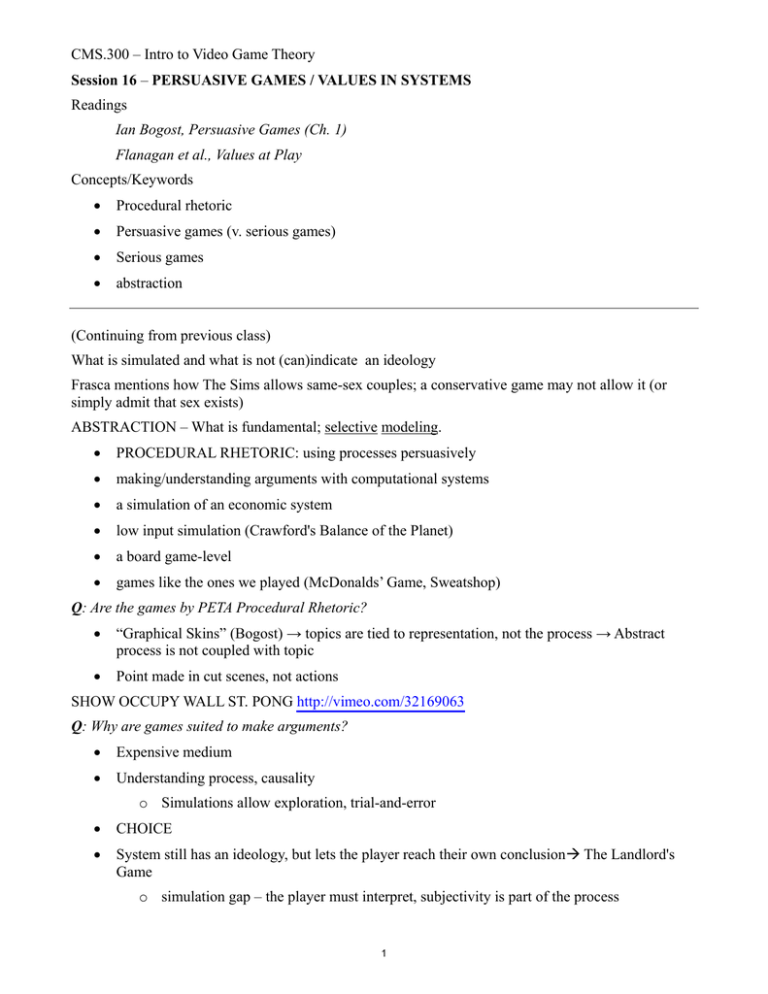CMS.300 – Intro to Video Game Theory Readings Concepts/Keywords
advertisement

CMS.300 – Intro to Video Game Theory Session 16 – PERSUASIVE GAMES / VALUES IN SYSTEMS Readings Ian Bogost, Persuasive Games (Ch. 1) Flanagan et al., Values at Play Concepts/Keywords Procedural rhetoric Persuasive games (v. serious games) Serious games abstraction (Continuing from previous class) What is simulated and what is not (can)indicate an ideology Frasca mentions how The Sims allows same-sex couples; a conservative game may not allow it (or simply admit that sex exists) ABSTRACTION – What is fundamental; selective modeling. PROCEDURAL RHETORIC: using processes persuasively making/understanding arguments with computational systems a simulation of an economic system low input simulation (Crawford's Balance of the Planet) a board game-level games like the ones we played (McDonalds’ Game, Sweatshop) Q: Are the games by PETA Procedural Rhetoric? “Graphical Skins” (Bogost) → topics are tied to representation, not the process → Abstract process is not coupled with topic Point made in cut scenes, not actions SHOW OCCUPY WALL ST. PONG http://vimeo.com/32169063 Q: Why are games suited to make arguments? Expensive medium Understanding process, causality o Simulations allow exploration, trial-and-error CHOICE System still has an ideology, but lets the player reach their own conclusion The Landlord's Game o simulation gap – the player must interpret, subjectivity is part of the process 1 CMS.300 – Intro to Video Game Theory Persuasive games: make arguments about how systems work in the material world strive to affect or change player opinion outside the game move from game world into material world → “magic circle” is poked Serious games (according to Bogost): educational, institutional, try to confirm values (vs. exploration/undermining of institutions possible in persuasive games) Q: Were the games we played persuasive? Did they change anybody's mind? How is September 12th an example of Procedural Rhetoric? What is the argument? Why is it important that it is interactive? VALUES When making games, systems embody values (what is rewarded, what is prohibited) Sources of values that can affect the design purpose of the project ideology of developers stakeholders users What is given preference in the design is also part of the values one wants to transmit Values are always there, even if the game is not persuasive or serious: the gender / ethnicity of the characters (Williams/Consalvo) what is rewarded – Civilization III the goals of the game what is left out As players (and designers) we must reflect on what is going on GROW-A-GAME CARDS valuesatplay.org/game-tools –l 2 MIT OpenCourseWare http://ocw.mit.edu CMS.300 / CMS.841 Introduction to Videogame Studies Fall 2011 For information about citing these materials or our Terms of Use, visit: http://ocw.mit.edu/terms.





